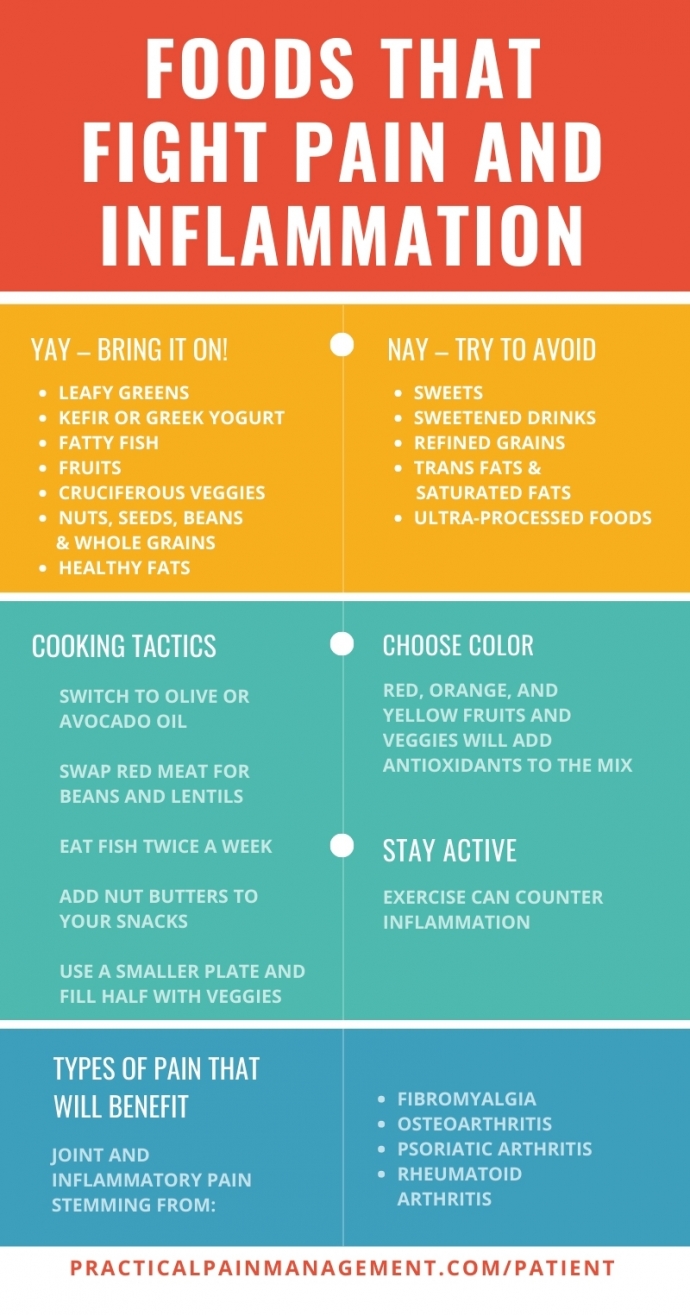Have you found sometimes a delicious dinner makes you feel great at that time, and you still feel great the next day; whereas other times a lovely meal makes you feel good at that time but you feel terrible the next day. Similarly consuming some food might worsen your pain; whereas others lessen pain.
At this year (2021) Australian Pain Society Conference, a special workshop on diet and pain was presented. We were told that there is up to 2 kilograms of gut bacteria in our body, some are good and some are bad. All of them are closely related to our diet, and impact on not only our digestion, but also
- Our mood: Depression and anxiety
- Neurodegeneration: stroke, dementia,
- Pain
- Addiction
At Geelong Chinese Medicine clinic, we are often asked what kind of food is bad or good for pain. A recent systematic review (1) examines 44 eligible clinical trials on diet and pain, including patients with rheumatoid arthritis, fibromyalgia, osteoarthritis, other musculoskeletal pain or neuropathic pain. The review looked into vegetarian/vegan die, single-food changes, elimination protocols, energy and/or macronutrient restriction, focus on omega-3 intake, or a Mediterranean diet. About half of the studies reported reduction in pain as well as positive metabolic changes. Overall whole-food diets are linked to positive changes in pain, regardless the types of diet. So it comes down to the quality of food and nutrient intensity.
Because pain has a close relationship with our mood and body inflammation, any food that could impact on those two will have either positive or negative influence on our pain. The table below illustrates the types of food to have or avoid to decrease inflammatory load in our body, therefore potentially reduces pain (2,3).
| Food to avoid or reduced quantity | Food to have |
| Processed food | Whole food, particular fruit, vegetables |
| Food with high glycaemic index, e.g., white bread, corn flakes, watermelon | Low glycaemic index: e.g., multi-grain bread, oats, apple |
| Nutrient poor | Prebiotics and probiotics, e.g., whole grains, legumes, tomatoes |
| Saturated fats, e.g., butter, coconut oil | Unsaturated fats, e.g., sardines, walnuts, olive oil |
| Overeating or fasting | Balanced eating |

In addition to what we eat, it is also important to remember some key factors about diet mentioned in our previous blog: diet is not just about food, it is also about everything around food: how the food is grown, prepared and eaten.
Other key factors that impact on pain are sleep, exercise and stress level, which could also allow or prevent good diet to do its good work on pain.
Paying attention to what we eat and how we eat will definitely help with our pain.
References
- Field R, Pourkazemi F, Turton J, Rooney K (2021) Dietary Interventions Are Beneficial for Patients with Chronic Pain: A Systematic Review with Meta-Analysis. Pain Medicine. 22(3), 694–714. doi: 10.1093/pm/pnaa378
- Cowan SF, Leeming ER, Sinclair A, Dordevic AL, Truby H, Gibson SJ (2020) Effect of whole foods and dietary patterns on markers of subclinical inflammation in weight-stable overweight and obese adults: a systematic review. Nutrition Reviews. 78(1):19–38.
- Campbell S (2021) Food, mood, chronic pain and the microbiome. Presentation at Australia Pain Society Conference 2021.
